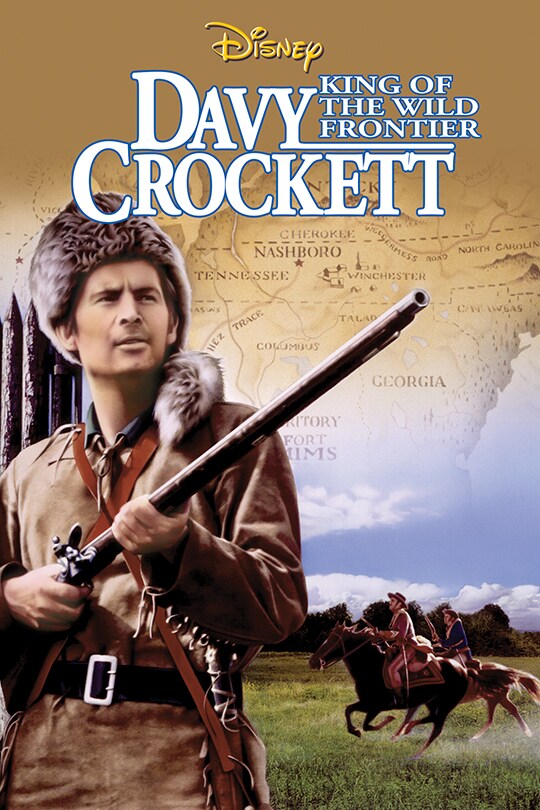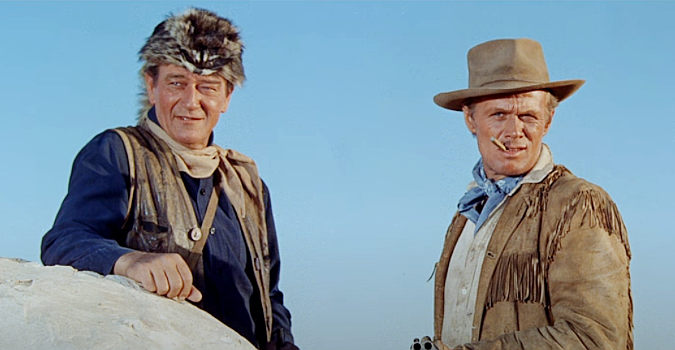

David Crockett was born August 17, 1786, in North Carolina, in what today is Greene County, Tennessee. His grand-parents had been killed back in 1777 by Creeks and Chickamauga Cherokees led by chief Dragging Canoe. At thirteen David was sent to school but played ‘hookey’ following an altercation with another student. His father attempted to whip David but he ran away and joined a cattle drive to Virginia and other destinations until 1802. He met Polly Finley and married her in 1806. The newlyweds settled on land near Polly’s parents where they parented three children, until Polly died in 1815. That same year David married Elizabeth Patton who bore him three daughters and a son by 1821.
Back in September 1813, Davy left his wife (Polly) and his children and enlisted for an initial term of ninety days as a scout with Francis Jones’ Company of Mounted Riflemen, serving under Colonel John Coffee during the Creek War. Preferring to hunt wild game for the soldiers, rather than kill Creek warriors, he served until December 24, 1813. By then the War of 1812 was being fought concurrently with the Creek War. Major-General Andrew Jackson, by now with the US Army, requested support from the Tennessee Militia to oust the British forces from Spanish Florida. Davy re-enlisted for a six-month term under Captain John Cowan in September 1814. Crockett saw little of the main action as he mostly foraged for food for the troops. With four months still to serve on his military reserve status, he hired a young man to fulfil the remainder of his service and returned home.
In the 1955 Disney film Davy Crockett: King of the Wild Frontier, we see Davy fighting a ‘to the death’ duel with Chief Red Stick of the Creek tribe. Total rubbish. There were several Creek chiefs who led the Red Sticks, and none of them fought Davy in a duel, much less were defeated by him. None of these leaders was actually named Red Stick anyway. Besides, Davy’s job was to hunt wild game for General Jackson’s troops, so he worked several days behind the main army at all times. And he and Jackson were not on friendly terms, not during the war (they probably never even met), nor in Washington, especially when Jackson became President. Davy strongly opposed the Indian Removal Act of 1830 that culminated in the appalling ‘Trail of Tears’ for the peaceful Cherokee nation. That was on the head of the equally appalling President Andrew Jackson
In 1821, Davy successfully ran for a seat in the Tennessee General Assembly, where he honed his anecdotal skills and favoured legislation to ease the tax burden on the poor, a stance that saw him support candidate William Carroll over Andrew Jackson’s candidate Edward Ward. Davy championed the rights of impoverished farmers in both his first and second sessions in the Assembly/ During Jackson’s election to the US Senate in 1823, Crockett backed his opponent John Williams. Davy lost his first tilt at the House of Representatives in 1825, but was successful in contesting both the 1827-29 and the 1829-31 terms. He opposed Jackson’s 1830 Indian Removal Act, the only member of the Tennessee delegation to vote against it. His stance was not popular with his own district, causing his defeat in the 1831 election. Davy was re-elected in 1833 but was defeated again in 1835.

John Wayne as Crockett, with Richard Widmark as Jim Bowie in The Alamo (1960)
John Wayne’s 1960 marathon movie The Alamo co-starred Richard Widmark as Jim Bowie. Soon after filming began Widmark requested he be removed from the picture because he had been miscast. The real Bowie was a larger than life individual who stood six feet six inches tall. Widmark stood at five feet nine! Incidentally, Davy’s famous rifle ‘Betsy’ came into his possession in 1803 when he was a seventeen year-old. He sold it three years later in exchange for a ‘courting horse’. It was later sold to a James Mccuistion whose descendants own it today. Crockett did not have it at the Alamo. It is interesting to note that even though the Texans were fighting against a certain kind of tyranny, it should be remembered that they were also fighting for the establishment of an independent republic in which slavery was legal! It could, therefore, be argued that the defenders were fighting to preserve the institution!
He travelled with thirty well-armed men and headed towards the revolution in Texas. In Little Rock, Arkansas, hundreds of people turned up just to get a look at him. On February 8, 1836, Davy and five other men arrived at the Alamo Mission in San Antonio. General Santa Anna’s army arrived on the twenty-third and immediately initiated a siege. The men garrisoning the Alamo were taken by surprise. According to survivor Susannah Dickinson, three men were sent out on March 3 to find reinforcements. Davy was one of the three. A group of reinforcements, accompanied by Crockett, broke into the Alamo on March 4. Two days later the full force of the Mexican Army attacked and over-ran the Alamo. It was all over in ninety minutes. Davy Crockett was dead at the age of forty-nine.
A former African-American slave known simply as Ben, who acted as a cook for one of Santa Anna’s officers, maintained he saw Crockett’s body in the barracks, surrounded by ‘no less than sixteen Mexican corpses’, with Davy’ knife buried in one of them. But that is only one story. In 1975 a book was published containing a translation of notes from a Mexican officer named Jose de la Pena, discovered in 1955, in which he claimed to have been present when Crockett (and six other survivors) were tortured and executed on Santa Anna’s orders. The revelation caused an uproar from Crockett loyalists convinced their hero had died fighting. Finally, in 2001, archivist David Gracy published a detailed analysis of the manuscript, complete with lab results, which seemed to confirm the authenticity of de la Pena’s claims. It would appear that Santa Anna would have been highly unlikely to rescind his order of ‘no quarter’, especially after having had El Deguello played for the Alamo defenders prior to the final assault.

That is good news, Alan! I look forward to continuing our back and forth in the months to come…
I really enjoyed your post, Alan. I didn’t know anything about the real Davy Crockett. Every day a school day.
Alan, thanks so much for this detailed and thorough overview of someone who the majority of Americans view as a towering, mythic figure. Such an interesting life from humble origins. Most of us here in the States know very little more about him than the well-intended and fun Disney version, which was of course a snapshot of a fairly short period in his life.
Now that I think of it, the team of Fess Parker and Buddy Ebsen, as Davy Crockett and George Russell, was the first screen team I ever witnessed together. Even before Abbott and Costello and Laurel and Hardy. Crockett and Russell were hugely popular characters in this country both on TV and in a Disney movie in the mid-1950s. The TV episodes were probably the first series I ever watched on TV.
As usual, thank you Alan.
Thankyou for your kind words, Dan. My apologies for not replying until now, but I had health issues that now appear to be resolved. Always good to hear from you.